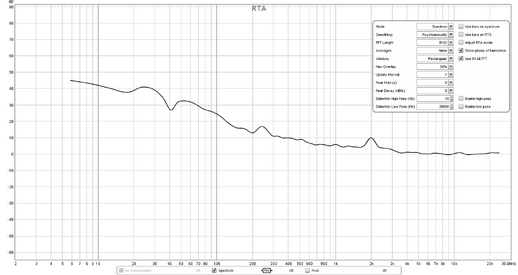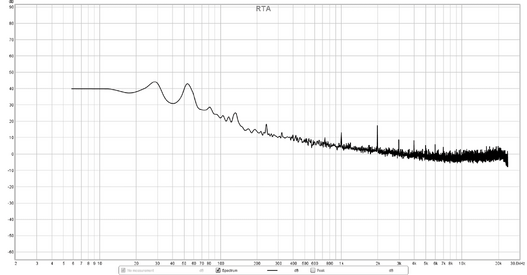RiceToy
Registered
Thread Starter
- Joined
- Apr 29, 2021
- Posts
- 6
More
- Main Amp
- ATI 6012 (class A/B)
- Additional Amp
- NAD (Hypex UcD class D)
- Other Amp
- Hypex FA123x2 (Ncore class D)
Using DaytonAudio UMM-6 with calibration file. Even with no sound in the room and the mic capped on the business end, I get this response (see attached)...
Seems like I should be seeing a perfectly (within the bounds of UMM-6 precision tolerance) flat frequency response.
The little peaks and valleys don't bother me so much, but the increasing slope from 3500 Hz down to 10 Hz means this combination is completely useless as-is.
Have I done something wrong in REW settings - why would it look like this?
Is there a way to abandon the mic calibration file that came with the mic and calibrate manually?
If the room is essentially silent and I have the mic capped (rubber cap) - I'd like to set that as flat response.
Thanks for any advice!
Seems like I should be seeing a perfectly (within the bounds of UMM-6 precision tolerance) flat frequency response.
The little peaks and valleys don't bother me so much, but the increasing slope from 3500 Hz down to 10 Hz means this combination is completely useless as-is.
Have I done something wrong in REW settings - why would it look like this?
Is there a way to abandon the mic calibration file that came with the mic and calibrate manually?
If the room is essentially silent and I have the mic capped (rubber cap) - I'd like to set that as flat response.
Thanks for any advice!
















